2024 Dacia Duster | PH Review
Rugged PH hero enters its third generation with more tech and luxe - but its feet are still firmly on the ground

You lot love Dacias. Any PH story on the Romanian brand garners reams of comments and the cars sell well too. The Duster has been Europe’s bestselling SUV privately since 2018, we’re told, while 2.2 million of the things have shifted since 2010 – over 100,000 of which roam UK roads.
Three-quarters of those are driven by first-time Dacia buyers, although so-called ‘conquest’ duties now shift to the yet more practical Bigster SUV. This third-gen Duster might still grab a few newbies, but it’s just as likely to give loyal Dustees a fresh dose of tech and sophistication.
Gone are the days of sub-£10k entry points – it seems like another universe in which steel-wheeled, manual windowed Dusters sold for four-figure sums on UK forecourts. Yet it’s still something of a bargain, even if Dacia insists the focus is on ‘value’ rather than ‘cheap’ these days. Prices start at £18,745, or less than a base-spec Corsa, rising to £26,745 for the bougiest trim and powertrain combo.


You’ve a choice of two- and four-wheel drive, as before, but now the former allows you to dip into hybrid motoring for the first time. That’s one of the myriad benefits of the new CMF-B platform beneath, which also helps squeeze more passenger and luggage room into the same 4.3m length as before. It’s extremely rare to attend any car launch these days and not be told it’s grown in every direction over its predecessor; the arrival of the self-proclaimed Bigster has allowed the humble Duster to stay honest.
All the better to amble around off-road or (more likely) slink through urban traffic, chunky sidewalls immune to all but the worst parking faux pas. Its manners on every surface are apparently improved by stiffened anti-roll bars and a more sound-proofed cabin.
The range starts with a 100hp Bi-Fuel car that pairs petrol and LPG tanks for nearly 900 miles of range. It’s the closest you’ll get to Dacia of a decade ago with its black steelies and a phone clamp in place of a media screen. Some may love the prosaism but expect nigh on all British buyers to leap straight to Expression trim (£21,245) or beyond. As well as 17-inch alloys, a smartphone-savvy 10-inch touchscreen and a reversing camera, it also brings your choice of the spunkier 130hp TCe engine if you’re happy rowing the gears yourself or the 140hp Hybrid if you’d rather go automatic. A 4x4 transmission is a £2,200 option, but only on the TCe 130. A Hybrid version may follow if customers demand it.


While we’ve never hidden our affection for the outgoing Duster, this one is more likeable from the off. Though the interior is mostly populated with hard plastics, key touch points feel more luxe and the car’s abundant character bubbles more evidently at the surface: the side mirrors point nicely at those curvy rear haunches while your view out the windscreen is underscored by that chunky, sculptured bonnet. A diddy little Duster emblem is embossed into the ‘screen surround, mimicking Jeep’s obsession with design Easter eggs. There’s chintz here, but it’s tactfully done and doesn’t get in the way of what’s always rolled these things consistently out of showrooms: utmost rationality.
The spirit of which is imbued throughout the materials Dacia uses. Its skid plates are dyed in the mould to make them more scratch resistant and while the interior stops short of the ‘exposed screwhead’ school of robustness, there’s no glossy piano black inserts to get smeared with fingerprints. More enamouring still are its copious ‘YouClip’ mounts to hang cupholders, bag hooks and the like from. It’s like a little donkey ready to be draped with goods – or a Morgan Super 3 with a roof.
Purists will adore the traditional ignition key in the Expression, though the mild hybrid gubbins of the 1.2-litre TCe ensure it flicks into life with the urgency of a starter button. It’s then just a short flick of the finger to the active safety switch to turn off its most intrusive bongs with two simple taps while the simple digital dials alongside toggle between your choice of speed and revs, speed and lane-keep or speed alone. Rationality strikes again.


For all the extra design chutzpah and chassis dynamism the Duster still feels authentically Dacia. The ride is reasonably smooth (two-wheel-drive cars use a torsion beam rear) and there’s less roll in corners, as promised. The suspension begins to untie only over really mottled surfaces. Progress is typically untaxing and it’s only when you push the car harder, as if to unearth some hidden gem, that you’ll find understeer. Natch. Its limits are high enough for those who’ll use it day-to-day and the modest reach of its performance encourages the appropriate level of commitment on a decent stretch of road.
Which isn’t to say it’s slow, as such; 129hp and 170lb ft hauling just 1,304kg results in a 9.8 seconds amble to 62mph but more prominent in-gear muscle. The engine does sound strained with revs, mind, so you’ll change up well before 4,000rpm via its slick enough six-speed manual.
Whisper it, but the Hybrid is nicer. Available only in two-wheel drive, its handling and ride feel broadly identical to an equivalent TCe but they’re allied to a powertrain with more pep and sophistication, despite a slight climb in 0-62mph time (to 10.1 seconds) on account of its extra mass. Though it’s still almost 300kg lighter than an equivalent Qashqai…
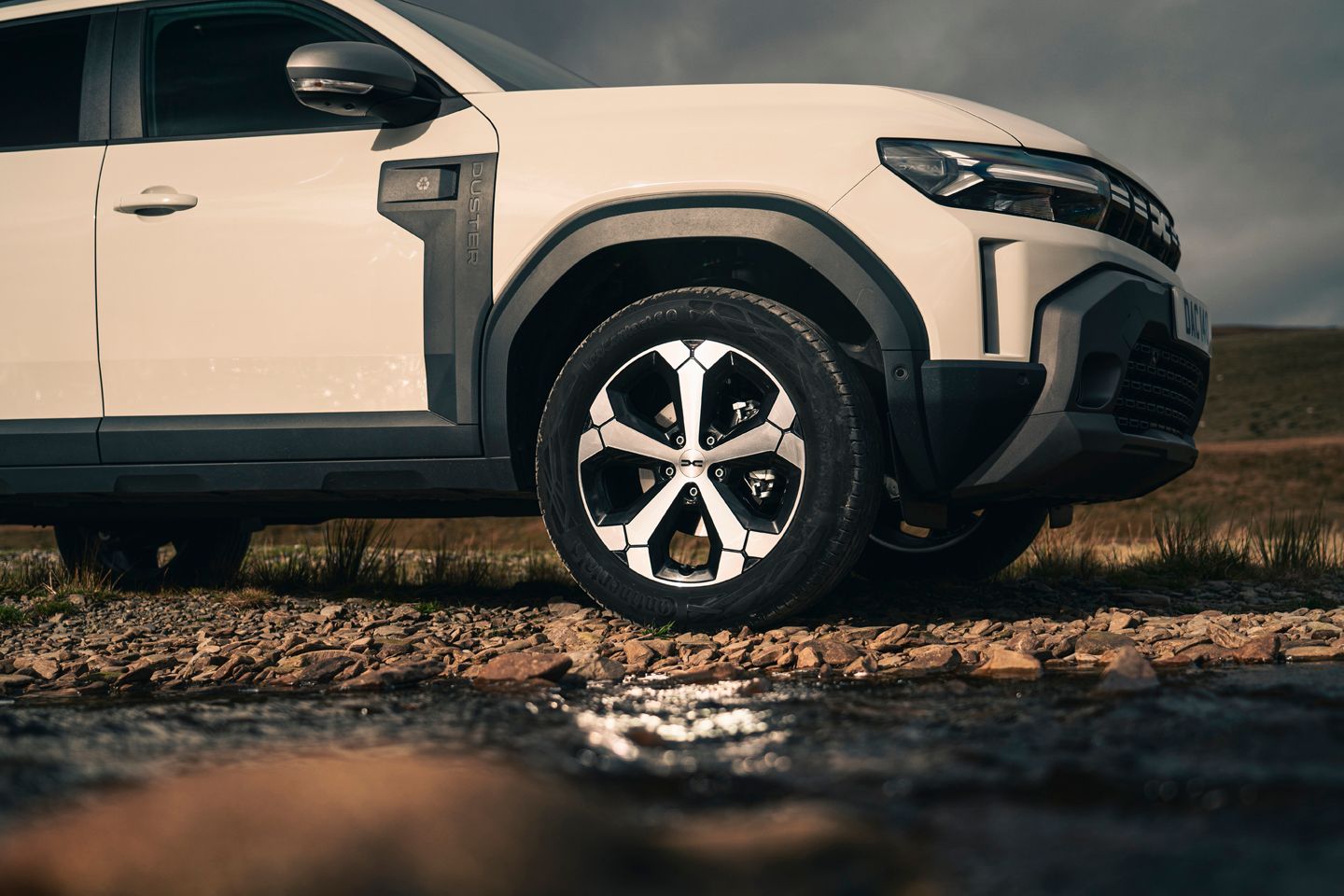
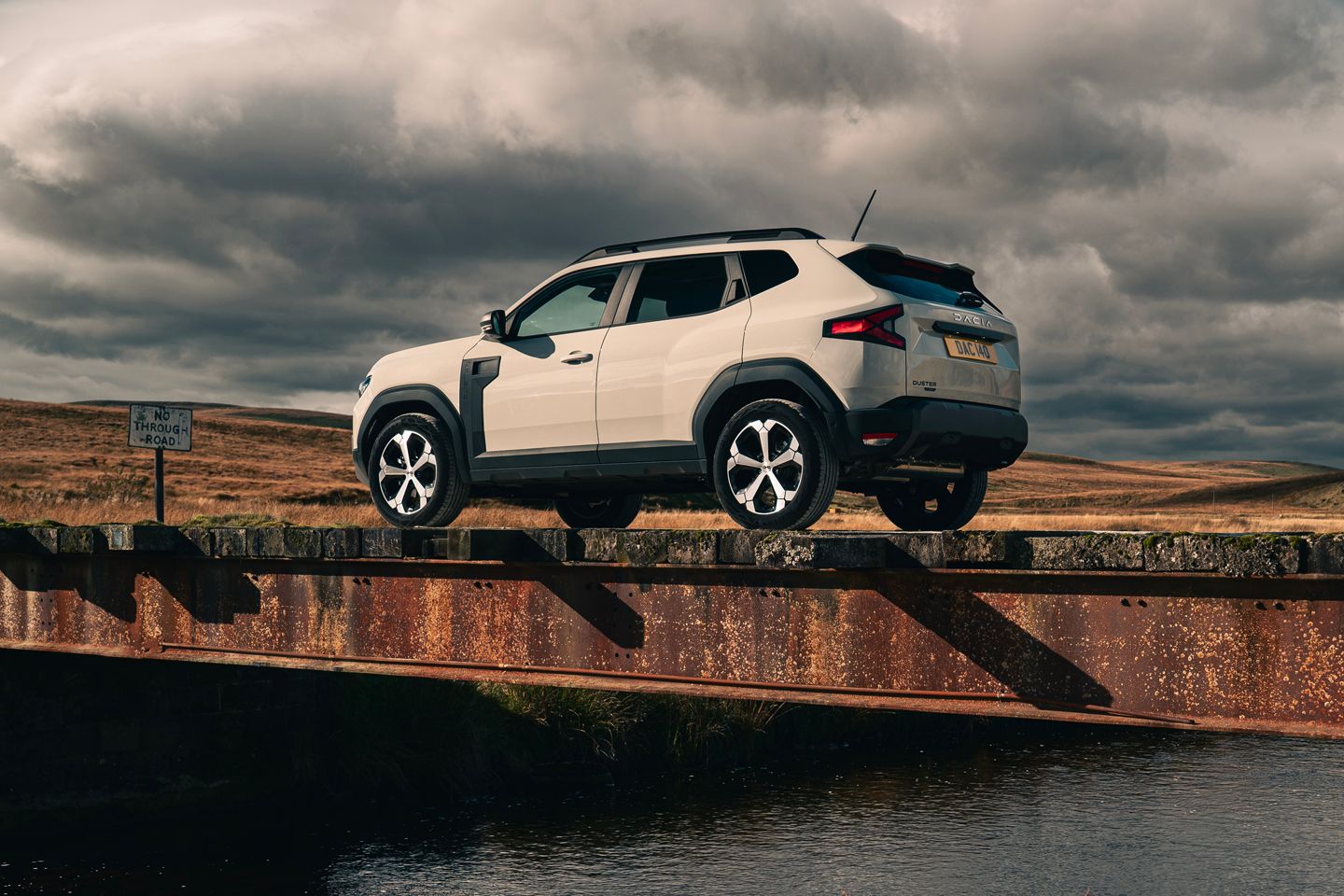
The brakes’ regen mode – accessed via a simple click to B on the rubberised gear selector toggle – is perfectly judged and allows subtler use of the brake pedal before dropping you right down to 5mph in traffic. And somewhat uniquely, here’s a car where I prefer the powertrain’s Eco mode; full power is still available via kickdown but its regular throttle response remains more than sharp enough for everyday driving while the 139hp 1.6-litre engine slips into action more smoothly and less frequently. While Dacia doesn’t claim an EV mode range – this isn’t a plug-in – you do seem to spend a large proportion of everyday mooching with the engine shushed. The claim is ‘80 per cent of urban driving’ and on this evidence it doesn’t feel spurious.
Its lack of paddles and the single-speed feel of its delivery (despite the nat-asp engine running through a four-speed auto) ensure it feels like a rival to Nissan’s curious E-Power range extender that sells well in Qashqais and X-Trails, only this feels much more natural and, for the most part, peaceful. I’d bet its 55.4mpg claim is nigh on achievable and its long periods of peace only serve to highlight a general uplift in refinement over Dacias of yore.
The more sophisticated feel of Duster Mk3 matches neatly with the new powertrain, electrification as neatly integrated as in the Jogger on the same platform. The fact it’s not a PHEV only boosts that ever-present rationality. Its most notable demerit is that towing capability halves over the TCe 130 (from 1,500 to 750kg) which might strike it out of contention for a handful of buyers.
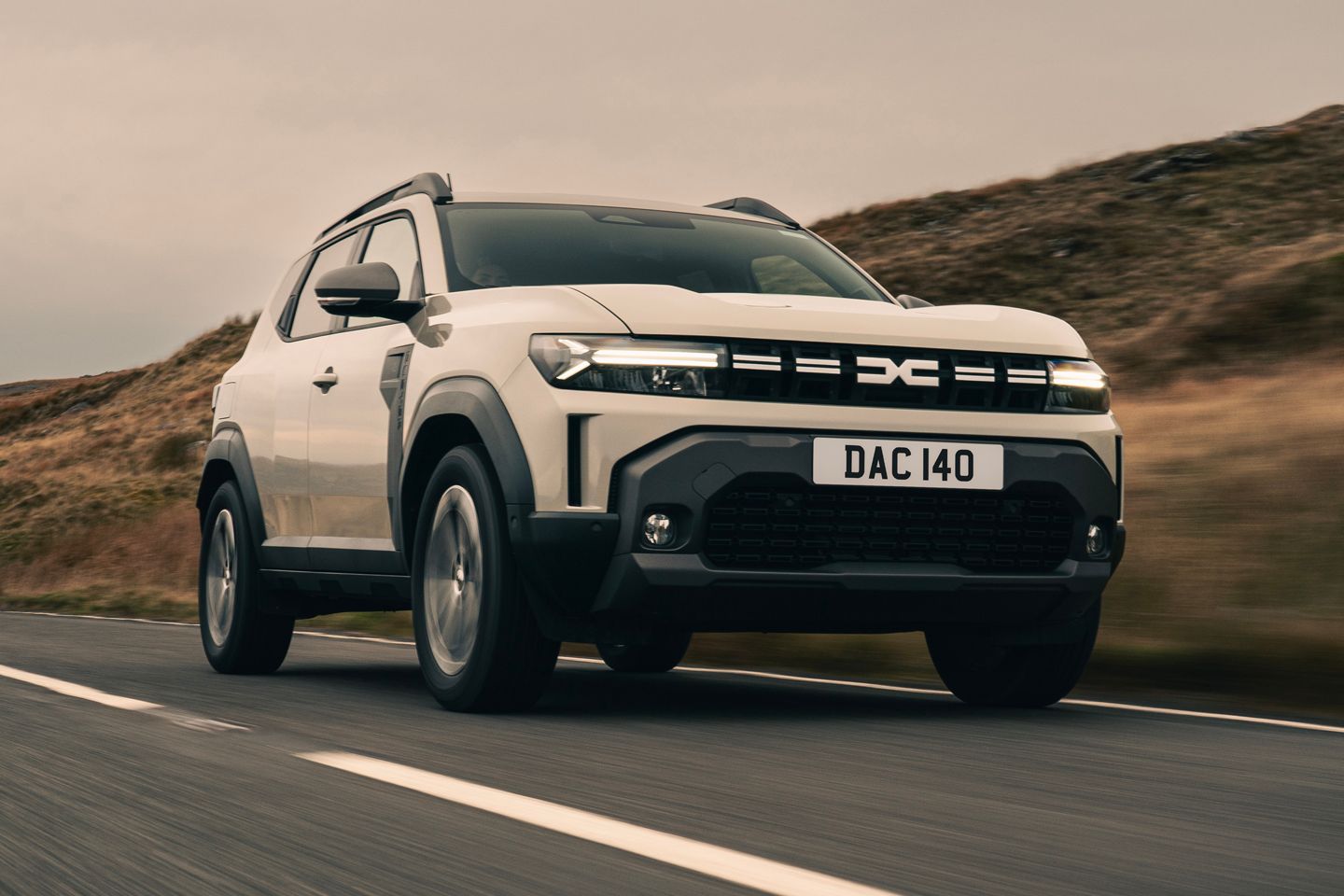
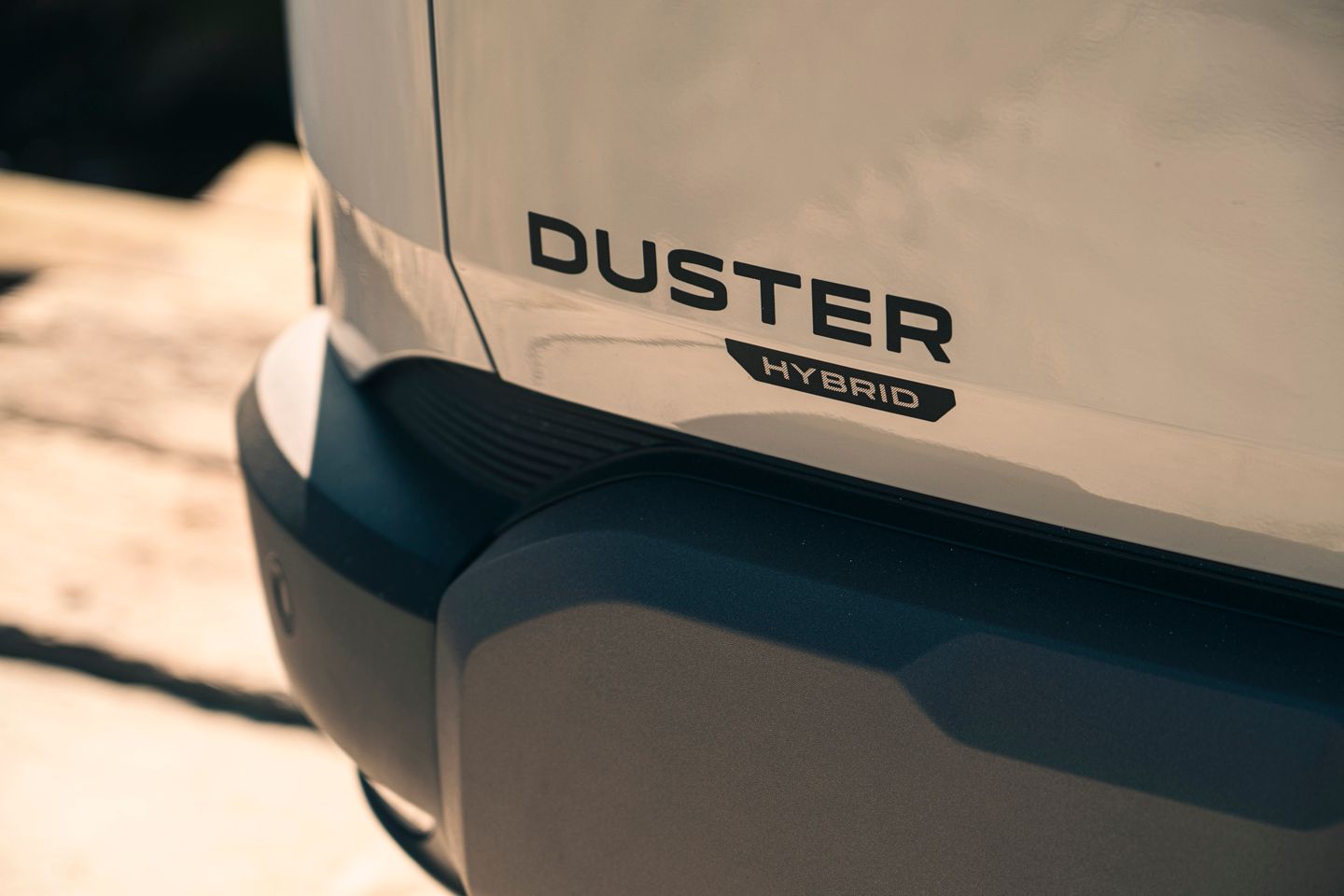
Perhaps they’ll go for the 4x4 anyway, which doesn’t yet host the Hybrid powertrain. A brief off-road foray around an empty quarry proved the friendliness of the Duster’s 31deg approach and 36deg departure angles and the sheer flexibility of the 4WD’s Auto mode; sampling Snow, Mud, Sand or its 4x4 Lock mode will have to wait for a day not chockful of walkie talkies and choregraphed media demonstrations. But it feels as gnarly – and hardy – as ever.
Dacia hasn’t forgotten the Duster’s roots, then, it’s just draped them with finely balanced tinsel to keep the price low but the proletarian vibe minimal. More than half of buyers will choose the Hybrid and a lofty spec level but while the customers are bougier than ever, the basics have still been nailed. The fact its steering wheel adjusts for reach and rake, never guaranteed at this end of the price lists, shows drivers have been kept in mind. Unlikely PH hero status remains.
Specification | 2024 Dacia Duster Hybrid 140 Expression
Engine: 1,598cc, four-cylinder, plus 1.2kWh traction battery
Transmission: Multi-mode clutchless automatic, front-wheel drive
Power (hp): 139 @ 5,600rpm (total)
Torque (lb ft): 109 @ 3,600rpm (petrol), 151lb ft @ 1,630rpm (electric)
0-62mph: 10.1 secs
Top speed: 105mph
Weight: 1,380kg
MPG: 55.4 (WLTP)
CO2: 114g/km (WLTP)
Price: £24,245
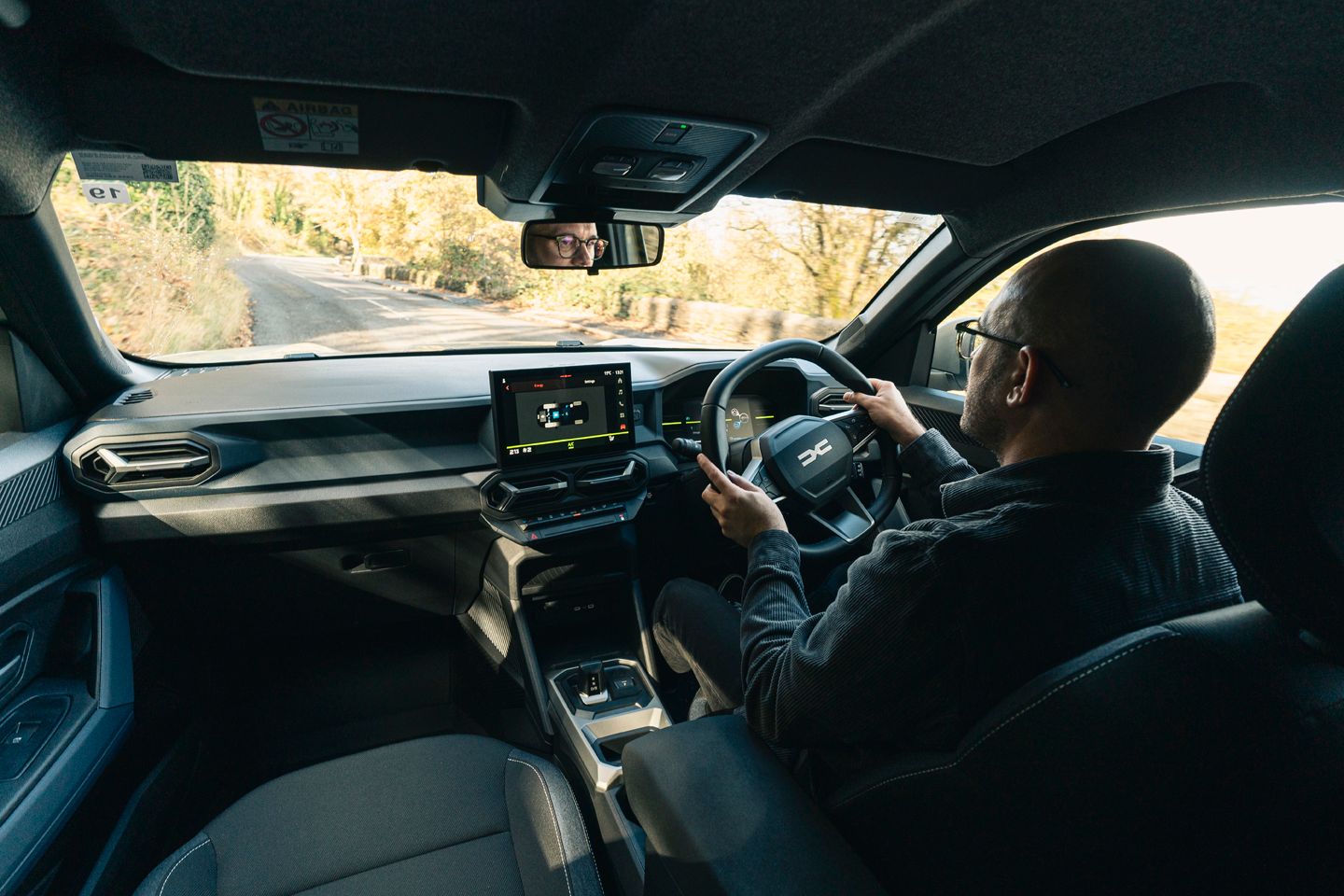

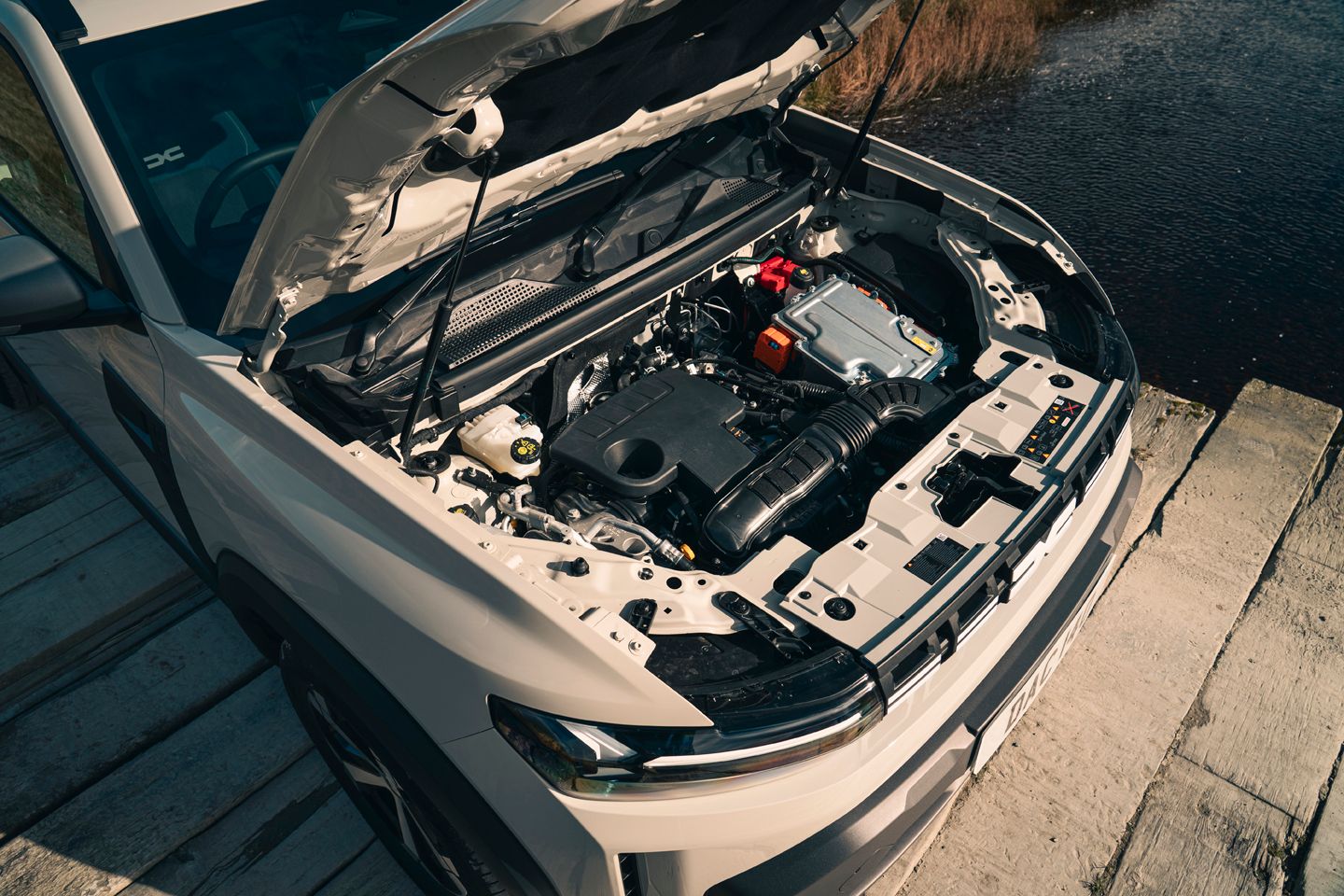
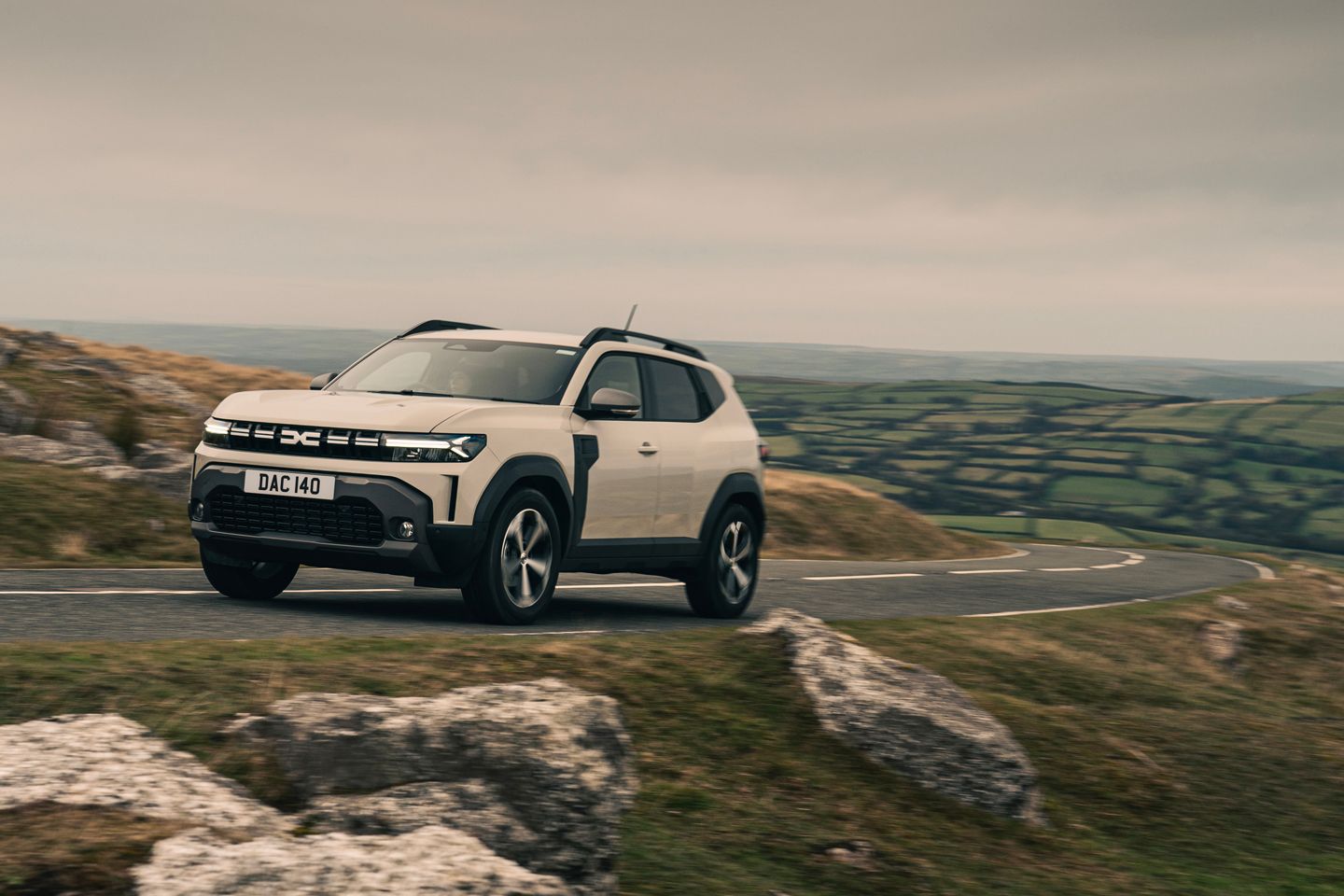
Would have been far more sensible to have kept it. Such a useful car and comfortable too.
Liking the look of the Mk3 but why force the base model buyer to have LPG. Not seen a pump in ages.
And nearly £19k. I still can't get my head around a doubling in price in just 3.5 years.
As I said, selling mine was a big mistake.
Phenomenal either way.
My son has an early Duster - it's an honest, reliable thing and serves him well (he has zero interest in cars). I'll be interested to have a nose at the new model.

A whole bunch of us got them from discussing on here and passing details of dealers.
From memory I think it was a grand and a half off RRP.
When I sold mine 3 years and 18k miles later, the exact model new was already over £17,000.
Hell of a leap in price, but then so have most cars.
I nearly bought a brand new Giulia Veloce in 2021 for £35k in a lovely spec. They are now £50k I believe. Do'h!
And I was leaning towards the Duster for its honest ruggedness but I see they still don't offer a sunroof.
So even though I think its a great car (I wouldn't have the hybrid though) the lack of a sunroof is a big turn off. Still there is the Bigster but I prefer the Duster looks. The Bigster looks a little contrived, though its still an option and it has a sunroof.
Labour costs in Romania are significantly lower compared to Western European countries, like the UK. This is the reason why manufacturers, including car companies like Dacia, have production facilities there.
Unfortunately for Dacia, wages have been gradually rising as Romania's economy grows and more foreign investment increases demand for skilled workers.
The increased labour costs in Romania, is the main factor in the higher price of the new Dacia Duster compared to the outgoing model.
Relying on lower wages to keep car prices affordable is unsustainable in the long term...
MG makes cheap cars too, but some how they look cheap and are unrealiable.
Labour costs in Romania are significantly lower compared to Western European countries, like the UK. This is the reason why manufacturers, including car companies like Dacia, have production facilities there.
Unfortunately for Dacia, wages have been gradually rising as Romania's economy grows and more foreign investment increases demand for skilled workers.
The increased labour costs in Romania, is the main factor in the higher price of the new Dacia Duster compared to the outgoing model.
Relying on lower wages to keep car prices affordable is unsustainable in the long term...
Gassing Station | General Gassing | Top of Page | What's New | My Stuff



